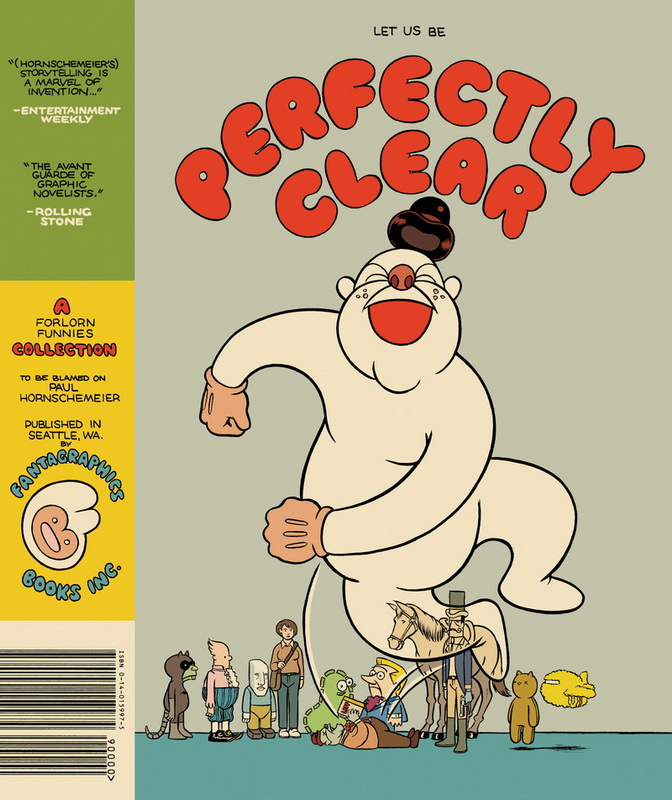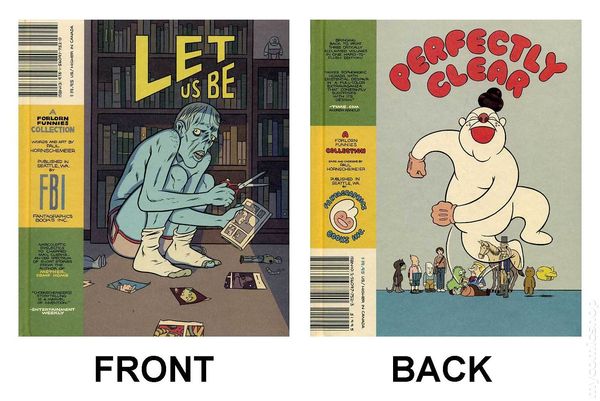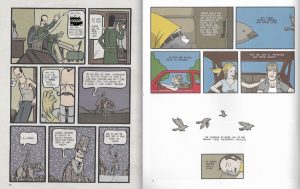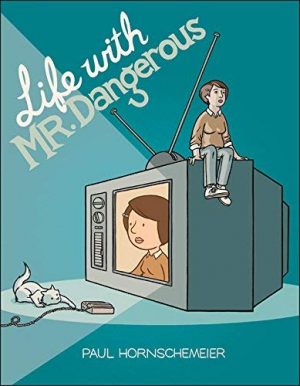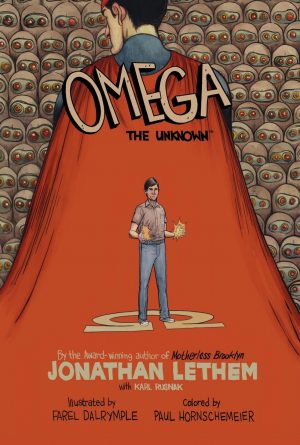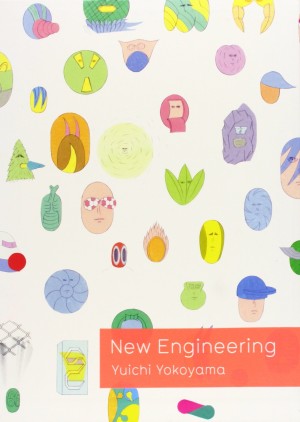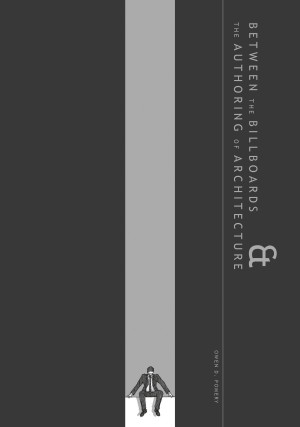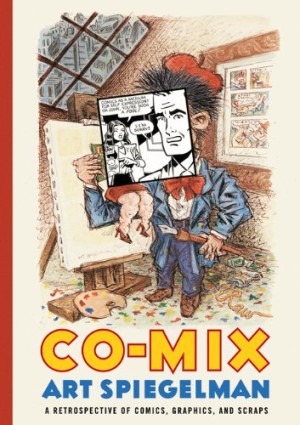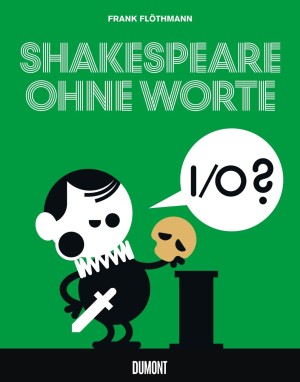Review by Graham Johnstone
Let Us Be Perfectly Clear is an anthology by Paul Hornschemeier. The title is, of course, ironic as it’s hard to be ‘perfectly clear’ even about the physical book. It’s a double-sided book, technically in the tête-bêche, or ‘head-to-toe’ format as when flipping the closed book vertically each side appears a ‘front’ cover with the spine to the left. The Perfectly Clear cover (favoured for online listings) has an ostensibly upbeat image of a rootin’-tootin’ cartoon character. Flipping to the Let Us Be side shows a starkly contrasting image of a guilt-ridden ghoul, caught in the spotlight, as he clips images from a comic. The blurb from publisher Fantagraphics suggests that one side is “comedic […] and the other decidedly more morose”, though it’s not so ‘perfectly clear’ cut.
Hornschemeier majored in philosophy and psychology, and “saw that comics could be a venue for exploring issues from his studies”. It’s apparent here, with the more narrative stories being internal and psychological, and the supposedly comical stories still being highly philosophical.
The Let Us Be side, opens strongly with ‘These Trespassing Vehicles’ (pictured, right) a story of a revenge shooting. Despite the dedication referencing Agatha Christie, Hornschemeier avoids typical crime fiction approaches. This is no whodunit, or even whydunit, as the narrated thoughts of the shooter reveal who he intends to kill, and why. This point of view, alternates with a law student studying the case decades later, thus distancing the reader from the drama of events. With the mystery and drama of the crime deliberately diminished, what are we left with? A compelling story and backstory of the people involved.
This same story demonstrates Hornschemeier’s facility with the medium, with lettering styles distinguishing different points of view, and palette changes indicating scene transitions. His career in advertising and book design, ensures thoughtful page design, and a range of textual, illustrative and rendering styles.
‘Wanted’ (presented like wild-west Wanted posters – nailed to a tree) subverts the masculine stereotype of its cowboy-styled protagonist, revealing his romantic nervousness, and need to feel wanted. ‘Return of the Elephant’ is on one level an uneventful story of a man meeting an out-of-town visitor, to eat pizza while watching videos. The ‘elephant’ of the story is literally a skin condition shared by one man and his father, and metaphorically the big subject not being directly addressed. The sub-textual story is deftly implied through apparently incidental details and snippets of dialogue, with the Chris Ware-like ‘glacial’ pace adding to the tension. It’s masterfully done, and extends its air of menace to the (half) book title Let Us Be.
In the Perfectly Clear side, even the most fragmentary vignettes have resonance: ‘Doctor Rodentia’s’ wish for mediocrity is undermined by expectations of his “strikingly rat-like appearance”. Reactions to these ‘comedic’ vignettes may be coloured by having read the ‘morose’ side: seemingly innocent jokes now evoke elephants in the room of dysfunctional family, and sexual alienation. ‘Men and Women of the Television’ is the longest story, but comprised of channel-hopping fragments. This includes, ‘The Bad Bad Man’, featuring a moustachioed pantomime-villain who corners his prey only to have his gun fail him: thereafter, he seeks some ‘lady love’, though questions his motivations (pictured left). Given Hornschemeier’s background in psychology, Freudian interpretations are unavoidable.
Hornschemeier’s visual versatility, and narrative brevity, make for a fragmentary read, but there’s impressive artistry here, and some powerful stories. Most are collected from Hornschemeier’s Forlorn Funnies series, and he and Fantagraphics revived the brand in 2017, with the first of a new pamphlet series.
